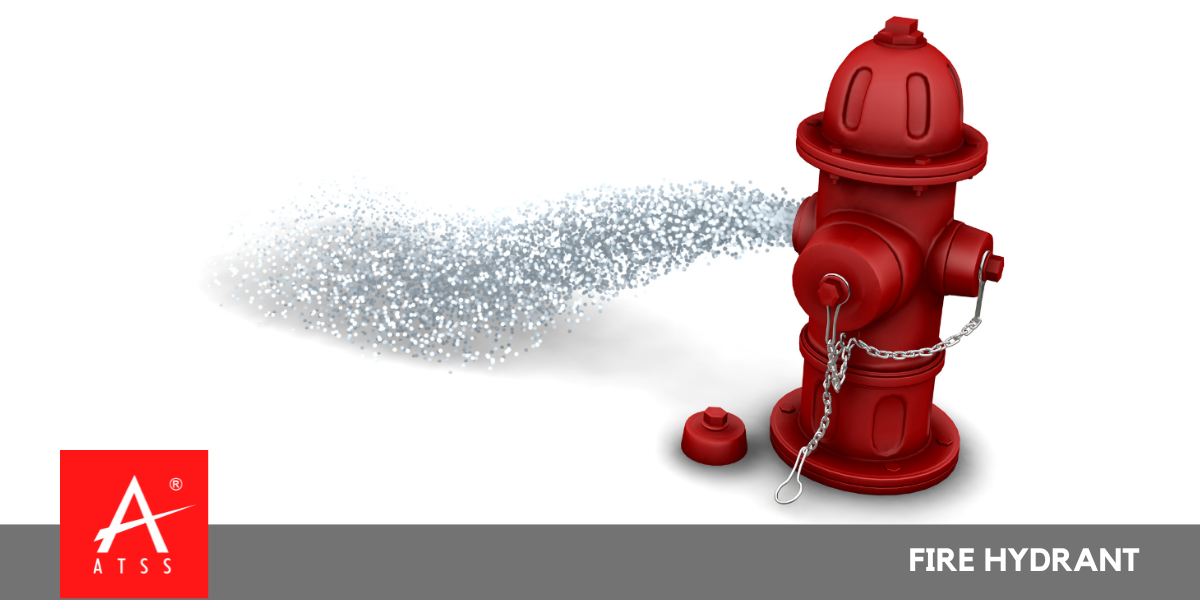
Fire Hydrant
HOW DOES A FIRE HYDRANT SYSTEM WORK?
If you are working in an industrial or commercial location, then don’t be surprised to find a fire hydrant system. City Fire Department, recommends and mandates the installation of a fire hydrant system in a commercial place. It is a safety measure to help the fire department in case of a fire mishap. Fire trucks carry a limited volume of water only and when required fire hydrants or fire plugs, which are connected to a reliable water source, help them. Fire trucks can draw sufficient water from a water source to extinguish the fire.
Fire hydrant installation consists of a system of pipework connected directly to the water supply main to provide water to each and every hydrant outlet and is intended to provide water for the firemen to fight a fire. The water is discharged into the fire engine from which it is then pumped and sprayed over a fire. Where the water supply is not reliable or inadequate, hydrant pumps should be provided to pressurize the fire mains.
All fire hydrant systems throughout the world are designed as per Australian standard AS2419. The major components of a fire hydrant are
Water Supply and Storage
- Pipework and Valves
- Fire Brigade Booster
- Pumpset
- Hydrant, Hydrant valve, and Coupling
- Lay-Flat fire hose
- Block Plan
Every fire hydrant system’s design depends on the user’s requirements and objectives. These requirements vary from building to building depending on the classification, floor area, and sprinkler protection. This way we can set precise water pressure and flow, to extinguish the fire.
Water Supply and Storage
The water supply associated with the hydrant needs to be a reliable source. This reliable source could be a street main, a dam, or an underground tank. The source must maintain an automatic replenishment system to recover from evaporation, leakage, etc. The water volume should meet its hydraulic requirement.
Pipework and Valves
A series of pipes are interconnected to each other for directing water from source to hydrant. The dimension of pipes is decided based on the hydraulic analysis. The valves are used to control the flow of water in a particular direction.
Fire Brigade Booster
The Fire Brigade Booster is an attachment for a fire hydrant system that provides an additional volume of water. It should be located in such a way that firefighters can easily access it. The pressure of a booster will depend on the requirements of a fire hydrant.
Booster Pump Set
When the water supply for a building is insufficient, a booster pump set is used to draw more water from the source. It has a standard diesel motor.
Hydrant
The hydrant is the heart of a fire hydrant system. It is the end of a fire hydrant system that appears as a valve. The general size of this hydrant valve is 65 mm. The compatibility of a hydrant is checked before connecting it to the fire brigade. It should be readily accessible in emergency situations.
Lay-Flat Fire Hose
It is a nozzle that could be connected to the hydrant
Block Plan
A block plan features essential information like the water supply location & dimensions, location & capacity of each water storage, pressure & flow rating of the pumps, etc.
Functioning of a Fire Hydrant System
If we consider the source of water to be a well, then water is stored in it for 365 days and 24×7. The water well is connected to the pump room. This pump room consists of a network of pipes laid throughout the factory. When the fire hydrant system is activated, it gets pressurized with water. The hydrant valve is directed in the direction of fire.
When the hydrant valve is opened, steady water flow is directed toward the fire. When there is a drop in the water pressure, booster pumps are used to maintain the flow. The nozzle is used to concentrate on a specific fire seat.

